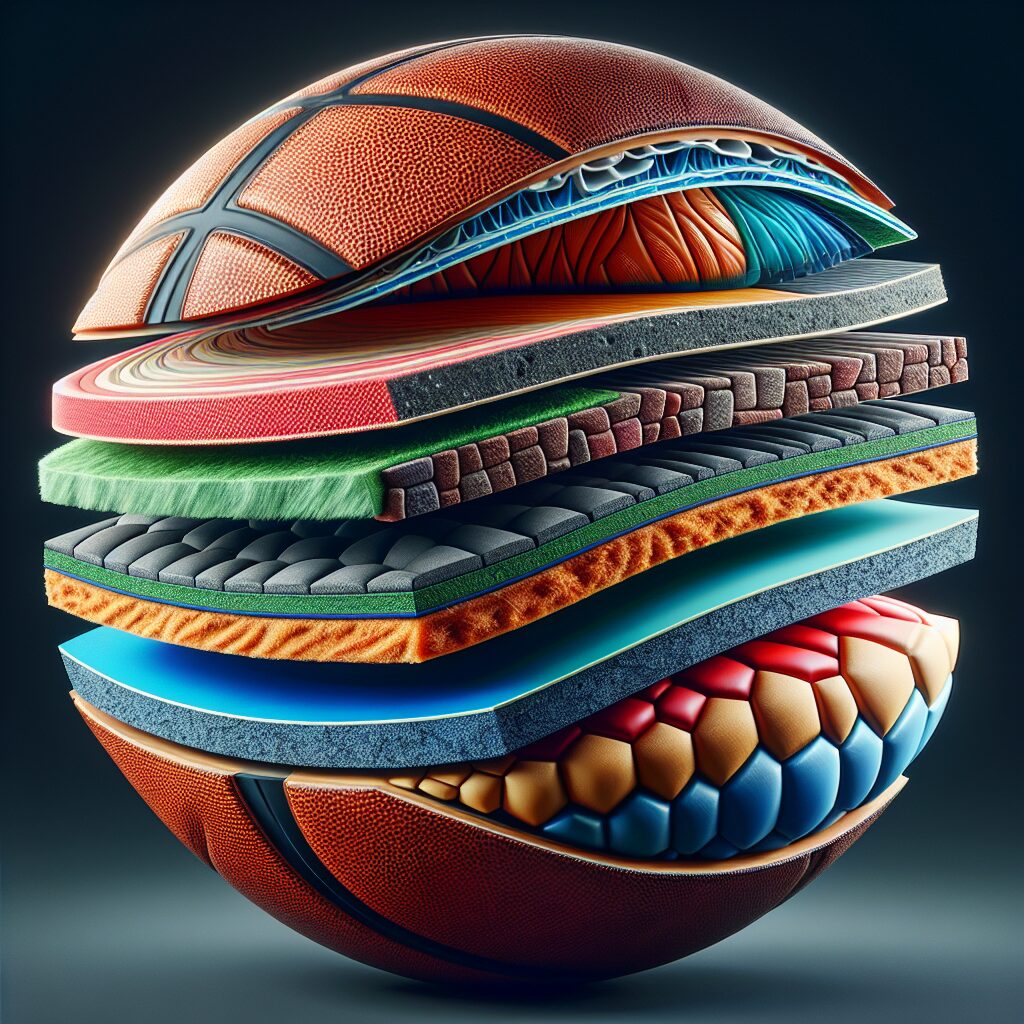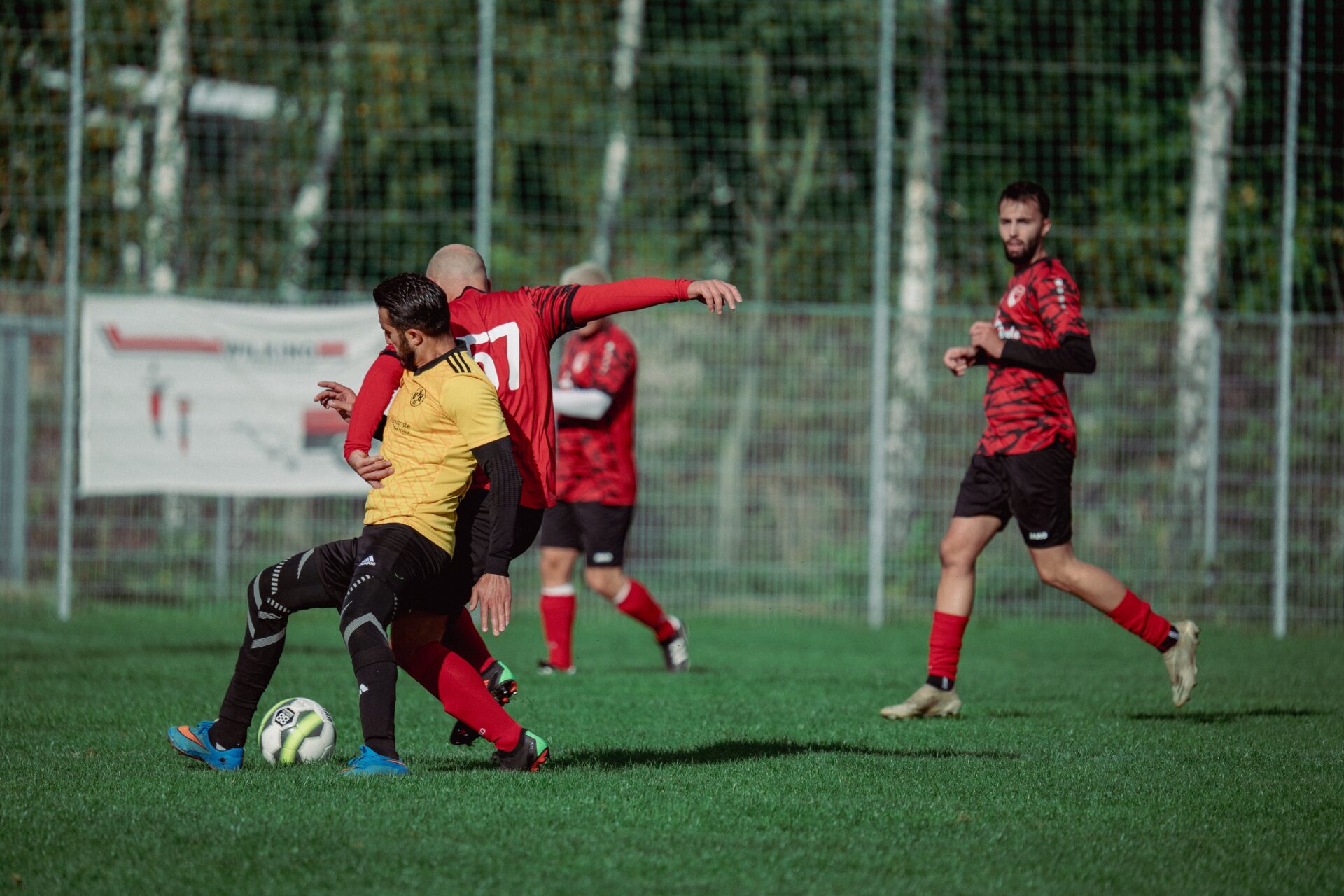Understanding the Layers in Sports Ball Construction is of utmost importance for athletes, sports enthusiasts, and even casual players. When we talk about the layers of a sports ball, we are referring to the different materials and components that come together to create a perfect ball for a particular sport. These layers play a crucial role in determining the ball’s performance, durability, and even its cost. Whether it’s a soccer ball, basketball, or tennis ball, each sport has its own unique construction, and understanding these layers can enhance our appreciation of the game and help us make informed choices when purchasing sporting equipment.
One fascinating fact about sports ball construction is that the layers are specifically designed to cater to the unique demands of each sport. For example, a soccer ball typically consists of an inner bladder, multiple layers of synthetic or natural rubber, and a protective outer cover. Each layer is deliberately chosen to optimize the ball’s flight characteristics, bounce, and grip on different playing surfaces. Similarly, a basketball is made with multiple layers of synthetic or leather materials, combined with a rubber bladder for optimum performance on the court. These layers not only contribute to the ball’s performance but also impact its price, as higher-quality materials often result in a more expensive product.
Now that we have gained an initial insight into the layers of sports ball construction, let’s delve deeper into the key takeaways. In the following sections, we will explore the specific impacts of these layers on the performance of different sports balls. We will discuss how the materials used affect the bounce, grip, and flight of the ball, and why some balls are better suited for specific playing conditions. Furthermore, we will also touch upon the role of technological advancements in sports ball construction, and how they have led to the development of innovative materials and designs. So, without further ado, let us proceed to uncover the intricacies of the layers in sports ball construction and how they shape our experience in the game.
Key Takeaways
1. Sports balls are typically constructed in layers, with each layer serving a specific purpose to optimize performance and durability.
2. The outermost layer, often made of synthetic materials like polyurethane or PVC, is designed to provide grip, durability, and water resistance.
3. Beneath the outer layer, a layer of lining or backing material helps retain shape and support the outer cover, contributing to the ball’s overall stability and durability.
4. The bladder, usually made of latex or butyl rubber, is responsible for retaining air pressure and maintaining the ball’s bounce and shape.
5. The number of layers and the materials used in each layer can vary depending on the sport and specific requirements, with different sports balls designed to optimize performance for various playing conditions.
What is the Construction of Sports Balls?
Sports balls are made up of various layers that contribute to their performance and durability. To truly understand the construction of sports balls, it is important to delve into the different layers and materials used in their production.
The Outer Covering
The outer layer of a sports ball is typically made of synthetic materials such as polyurethane or polyvinyl chloride (PVC). These materials are chosen for their durability and ability to withstand rough impact during sports activities. The outer covering also provides a smooth surface for better control and grip.
The Winding Layer
Beneath the outer covering, sports balls often have a layer of winding. This layer consists of strong threads or fibers that are wound tightly around the inner core. The winding layer adds strength to the ball and helps maintain its shape during intense play. It also enhances the ball’s elasticity and provides a solid bounce.
The Bladder
The bladder is an essential component of sports balls as it holds the air and maintains the ball’s pressure. It is usually made of latex or rubber and is responsible for giving the ball its shape and responsiveness. The bladder is typically located within the winding layer and can be inflated or deflated to adjust the ball’s firmness.
The Inner Core
At the heart of the sports ball lies the inner core. The core can vary in composition depending on the type of sport. It is often made of rubber, cork, or synthetic materials and contributes to the ball’s weight, rebound, and overall performance. The quality and density of the core greatly impact the ball’s playability.
The Stitching
To hold all the layers together, sports balls are stitched using strong nylon or polyester threads. The stitching not only adds structural integrity but also secures the bladder and prevents any air leakage. The quality and pattern of the stitching play a crucial role in enhancing the ball’s durability and longevity.
Tips for Choosing a High-Quality Sports Ball
- Consider the type of sport: Different sports require specific ball characteristics, so choose a ball designed for the sport you play.
- Examine the outer covering: Inspect the surface for any defects or imperfections that may affect the ball’s performance.
- Check the stitching: Ensure that the stitches are tight, even, and securely holding all the layers together.
- Test the bounce: Give the ball a gentle bounce to gauge its rebound ability. A high-quality ball should have a consistent and reliable bounce.
- Understand the materials: Research the materials used in the ball’s construction to determine their durability and suitability for your playing conditions.
- Consider the brand reputation: Opt for reputable brands known for producing high-quality sports balls.
- Seek recommendations: Consult coaches, teammates, or professionals in your sport for their advice on selecting the best ball.
Frequently Asked Questions
What are the layers in sports ball construction?
The layers in sports ball construction refer to the different components that make up a sports ball. These layers can vary depending on the sport but typically include an outer cover, an inner bladder, and various padding or reinforcement layers.
Why are layers important in sports ball construction?
Layers play a crucial role in sports ball construction as they contribute to the ball’s performance, durability, and safety. The different layers work together to provide the desired flight characteristics, impact absorption, and resistance to wear and tear.
How does the outer cover impact the ball’s performance?
The outer cover is often made of synthetic materials such as polyurethane or leather. It affects the ball’s grip, aerodynamics, and overall feel. The texture and surface of the cover can influence the ball’s ability to be controlled, kicked, or thrown accurately.
What is the purpose of the inner bladder?
The inner bladder is responsible for maintaining the ball’s shape, pressure, and bounce. It is typically made of latex or butyl rubber and helps retain air inside the ball. The bladder’s quality affects how well the ball maintains its inflation and responsiveness during play.
Do all sports balls have the same construction?
No, different sports require unique ball constructions tailored to their specific needs. For instance, a basketball has a different layer configuration than a soccer ball. The construction is optimized to enhance the ball’s performance, taking into account the sport’s requirements.
Are there any safety considerations in sports ball construction?
Absolutely. Safety is a paramount concern in sports ball construction. The proper layering and materials used contribute to the ball’s ability to absorb impacts, reduce the risk of injury, and withstand vigorous play without compromising player safety.
Can the layers in sports ball construction affect how the ball behaves in wet conditions?
Yes, the choice of materials and layer configuration can influence how a ball performs in wet conditions. Some balls are designed with special coatings or water-resistant materials to minimize water absorption, maintain shape, and prevent loss of grip or control when exposed to moisture.
What maintenance tips should be followed for sports balls?
To prolong the lifespan of sports balls, it is important to clean them regularly, store them properly, and check their inflation levels. Additionally, following the manufacturer’s guidelines for maintenance, avoiding extreme temperatures, and protecting them from sharp objects or rough surfaces will help ensure their longevity.
Do the layers in sports ball construction affect the cost of the ball?
Yes, the complexity of the layering process and the quality of materials used can impact the cost of sports balls. Higher-quality materials and intricate layer designs often result in more expensive balls. However, it’s important to examine the ball’s overall value and performance rather than solely considering the cost.
Are there any regulations or standards governing sports ball construction?
Yes, various sports governing bodies, such as FIFA, NBA, or the International Rugby Board, set standards and regulations for sports ball construction. These guidelines ensure consistency, quality, and fair play across different levels of competition.
Final Thoughts on Understanding the Layers in Sports Ball Construction
Understanding the layers in sports ball construction is crucial for both athletes and sports enthusiasts. By grasping the intricacies of how these balls are designed and built, one can appreciate the effort and technology involved in creating high-performance sports equipment.
Moreover, recognizing the importance of proper ball construction allows players to make informed decisions when selecting their gear. Whether it’s choosing a soccer ball for wet conditions or identifying a basketball with the right grip, understanding the layers enables players to optimize their performance and enjoyment of the game. So next time you step onto the field or court, take a closer look at the ball in your hands and appreciate the science behind its construction.




